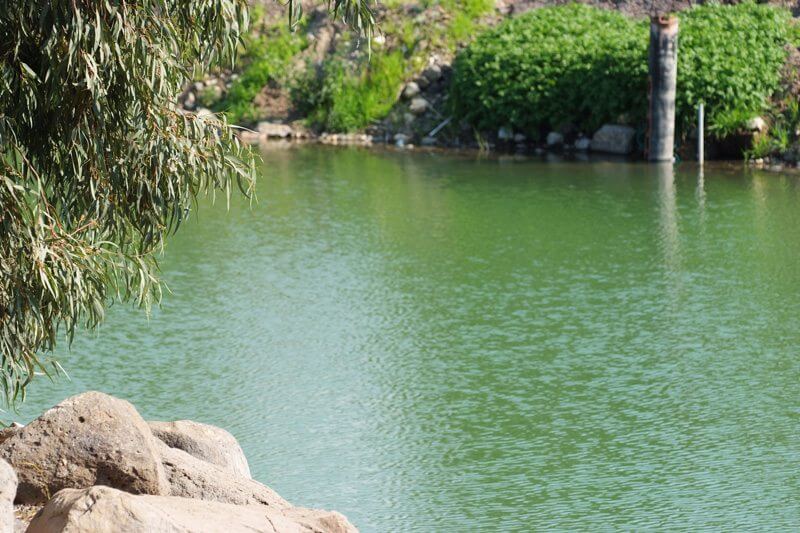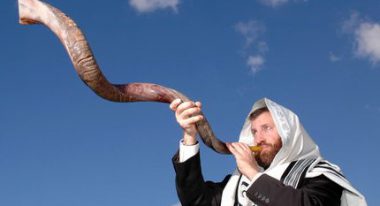
Holy Water in the Bible
Water is one of the most commonly used words in the Bible. We know that water is a synonym to life. This applies particularly to such a hot country like Israel, where during the dry summer months there’s almost no rain, and therefore any non-drying source or well is regarded as a treasure. Water is a treasure of life.
People often ask if believing in the Holy Water is something like religious atavism, a relic of primitive primitive magic? After all, there is no holy water in the Bible… Or is there?
Let’s refer to the Bible itself.
The Holy Water is mentioned directly in the Book of Numbers: “Then he shall take some holy water in a clay jar and put some dust from the tabernacle floor into the water.” (Numbers 5:17) Many explain this as a rite derived from the ancient magical action, although in this verse G-d speaks directly to Moses. But in general the theological meaning of water and holiness revealed much deeper and goes far beyond the purely religious field.
The Bible begins with the words: “In the beginning God created the heavens and the earth. Now the earth was formless and empty, darkness was over the surface of the deep, and the Spirit of God was hovering over the waters.” (Genesis 1:1-2).
One of the lexical-semantic features of Hexaemeron — is that in the description of the Creation the same word was used in different places with different meaning. In the 13th century BC when the books of Genesis were written there was no terms in the human language that could describe such specific states of matter as a “vacuum” or “plasma”. Instead, the writers used the word “water”. In the light of the newest scientific discoveries the phrase “Spirit of God was hovering over the waters” becomes clearer.
In the texts of the Old Testament we see a vague, almost intuitive understanding of the meaning of the sacred connection of water and the Holy Spirit. Here water is used not only purely for hygienic but even for ritual ablutions. In the Book of Exodus we read: “Then the Lord said to Moses, “Make a bronze basin, with its bronze stand, for washing. Place it between the tent of meeting and the altar, and put water in it. Aaron and his sons are to wash their hands and feet with water from it. Whenever they enter the tent of meeting, they shall wash with water so that they will not die. Also, when they approach the altar to minister by presenting a food offering to the Lord, they shall wash their hands and feet so that they will not die. This is to be a lasting ordinance for Aaron and his descendants for the generations to come” (Exodus 30:17-21).
And also: “He placed the basin between the tent of meeting and the altar and put water in it for washing, and Moses and Aaron and his sons used it to wash their hands and feet. They washed whenever they entered the tent of meeting or approached the altar, as the Lord commanded Moses” (Exodus 40:30-32).
In the Book of Leviticus we find numerous references to the need of half hygienic half ritual ablutions in cases of physical desecration.
In the Book of Numbers there’s an indication of the ablution of the Levites before worship in the tabernacle (Numbers 8:21) and Deuteronomy – the ritual washing of the soldiers during the march outside the camp (Deuteronomy 23:11)
During the construction of the Temple in Jerusalem, King Solomon built a special baths for ritual ablutions: “He made a bronze altar twenty cubits long, twenty cubits wide and ten cubits high. He made the Sea of cast metal, circular in shape, measuring ten cubits from rim to rim and five cubits high. It took a line of thirty cubits to measure around it. Below the rim, figures of bulls encircled it—ten to a cubit. The bulls were cast in two rows in one piece with the Sea.
The Sea stood on twelve bulls, three facing north, three facing west, three facing south and three facing east. The Sea rested on top of them, and their hindquarters were toward the center. It was a handbreadth in thickness, and its rim was like the rim of a cup, like a lily blossom. It held three thousand baths
He then made ten basins for washing and placed five on the south side and five on the north. In them the things to be used for the burnt offerings were rinsed, but the Sea was to be used by the priests for washing”.
This “sea”, in Hebrew “mikveh” was apparently a large bathing pool. Interestingly, the same Hebrew word “mikveh” was used in the Hexaemeron for describing of the gathered waters.
A very curious fragment of the Bible describes the miraculous healing of the leper of the Syrian military commander Naaman. Prophet Elisha advised Naaman to plunge himself seven times in the Jordan River (4 Kings 5:9-14).
In addition, we find a very meaningful prophecy of Isaiah, conducting a parallel between the water and the Spirit of God: “For I will pour water on the thirsty, and floods upon the dry ground; I will pour my spirit upon thy seed, and my blessing upon thine offspring” (Isaiah 44: 3).
Finally, there is an evidence that even in Old Testament times, a ritual bath was one of the elements of the multi-stage ritual convert to Judaism – the treatment of non-Jews, Gentiles to Judaism.
In the New Testament the meaning of the ritual ablution was not to purify oneself from physical filth neither to turn non-Jews to Judaism. It had a high sacred purpose. John the Baptist was baptizing people to purify them from their sins.
Even Jewish catechists came to be baptized by John: “he saw many of the Pharisees and Sadducees coming to his baptism” (Matthew 3:7).
And finally, to John came the One he was prophesying: “Jesus came from Galilee to the Jordan to John, to be baptized by him. John would have prevented him, saying, “I need to be baptized by you, and do you come to me?” But Jesus answered him, “Let it be so now, for thus it is fitting for us to fulfill all righteousness” (Matthew 3:13-15).
Why would sinless Jesus come to be baptized, which sins could He possibly repent? Here another mysterious side of the Baptism is revealed.
So, Jesus comes as a man to be baptized by John. And what happens?
“And when Jesus was baptized, immediately he went up from the water, and behold, the heavens were opened to him, and he saw the Spirit of God descending like a dove and coming to rest on him; and behold, a voice from heaven said, “This is my beloved Son, with whom I am well pleased” (Matthew 3:16-17).
Therefore the Evangelical evidences about the Baptism of Jesus give us clear understanding of the divine essence of this sacrament.
Let’s remember one Gospel story to end with.
Jesus Talks With a Samaritan Woman
” Now Jesus learned that the Pharisees had heard that he was gaining and baptizing more disciples than John— although in fact it was not Jesus who baptized, but his disciples. So he left Judea and went back once more to Galilee.
Now he had to go through Samaria. So he came to a town in Samaria called Sychar, near the plot of ground Jacob had given to his son Joseph. Jacob’s well was there, and Jesus, tired as he was from the journey, sat down by the well. It was about noon.
When a Samaritan woman came to draw water, Jesus said to her, “Will you give me a drink?” (His disciples had gone into the town to buy food.)
The Samaritan woman said to him, “You are a Jew and I am a Samaritan woman. How can you ask me for a drink?” (For Jews do not associate with Samaritans.)
Jesus answered her, “If you knew the gift of God and who it is that asks you for a drink, you would have asked him and he would have given you living water.”
“Sir,” the woman said, “you have nothing to draw with and the well is deep. Where can you get this living water? Are you greater than our father Jacob, who gave us the well and drank from it himself, as did also his sons and his livestock?”
Jesus answered, “Everyone who drinks this water will be thirsty again, but whoever drinks the water I give them will never thirst. Indeed, the water I give them will become in them a spring of water welling up to eternal life.”
The woman said to him, “Sir, give me this water so that I won’t get thirsty and have to keep coming here to draw water.”
He told her, “Go, call your husband and come back.”
“I have no husband,” she replied.
Jesus said to her, “You are right when you say you have no husband. The fact is, you have had five husbands, and the man you now have is not your husband. What you have just said is quite true.”
“Sir,” the woman said, “I can see that you are a prophet. Our ancestors worshiped on this mountain, but you Jews claim that the place where we must worship is in Jerusalem.”
“Woman,” Jesus replied, “believe me, a time is coming when you will worship the Father neither on this mountain nor in Jerusalem. You Samaritans worship what you do not know; we worship what we do know, for salvation is from the Jews. Yet a time is coming and has now come when the true worshipers will worship the Father in the Spirit and in truth, for they are the kind of worshipers the Father seeks. God is spirit, and his worshipers must worship in the Spirit and in truth.”
The woman said, “I know that Messiah” (called Christ) “is coming. When he comes, he will explain everything to us.”
Then Jesus declared, “I, the one speaking to you—I am he.”






